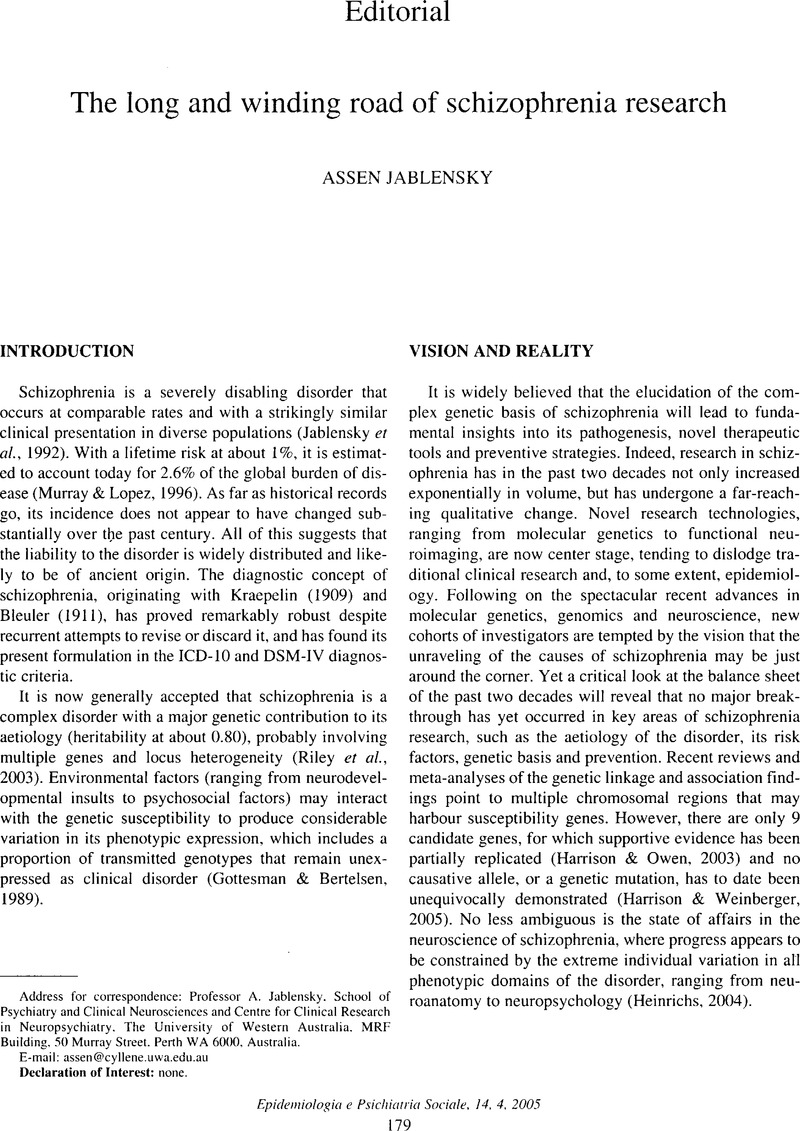Crossref Citations
This article has been cited by the following publications. This list is generated based on data provided by Crossref.
Danese, Andrea
2006.
A public health genetic approach for schizophrenia.
Epidemiologia e Psichiatria Sociale,
Vol. 15,
Issue. 3,
p.
185.
Lasalvia, A.
Bonetto, C.
Cristofalo, D.
Tansella, M.
and
Ruggeri, M.
2007.
Predicting clinical and social outcome of patients attending ‘real world’ mental health services: a 6‐year multi‐wave follow‐up study.
Acta Psychiatrica Scandinavica,
Vol. 116,
Issue. s437,
p.
16.
Tosato, Sarah
Ruggeri, Mirella
Bonetto, Chiara
Bertani, Mariaelena
Marrella, Giovanna
Lasalvia, Antonio
Cristofalo, Doriana
Aprili, Giuseppe
Tansella, Michele
Dazzan, Paola
DiForti, Marta
Murray, Robin M.
and
Collier, David A.
2007.
Association study of dysbindin gene with clinical and outcome measures in a representative cohort of Italian schizophrenic patients.
American Journal of Medical Genetics Part B: Neuropsychiatric Genetics,
Vol. 144B,
Issue. 5,
p.
647.
Ruggeri, Mirella
and
Tansella, Michele
2007.
Achieving a better knowledge on the causes and early course of psychoses: a profitable investment for the future?.
Epidemiologia e Psichiatria Sociale,
Vol. 16,
Issue. 2,
p.
97.
Bellani, Marcella
and
Brambilla, Paolo
2008.
The use and meaning of the continuous performance test in schizophrenia.
Epidemiologia e Psichiatria Sociale,
Vol. 17,
Issue. 3,
p.
188.





